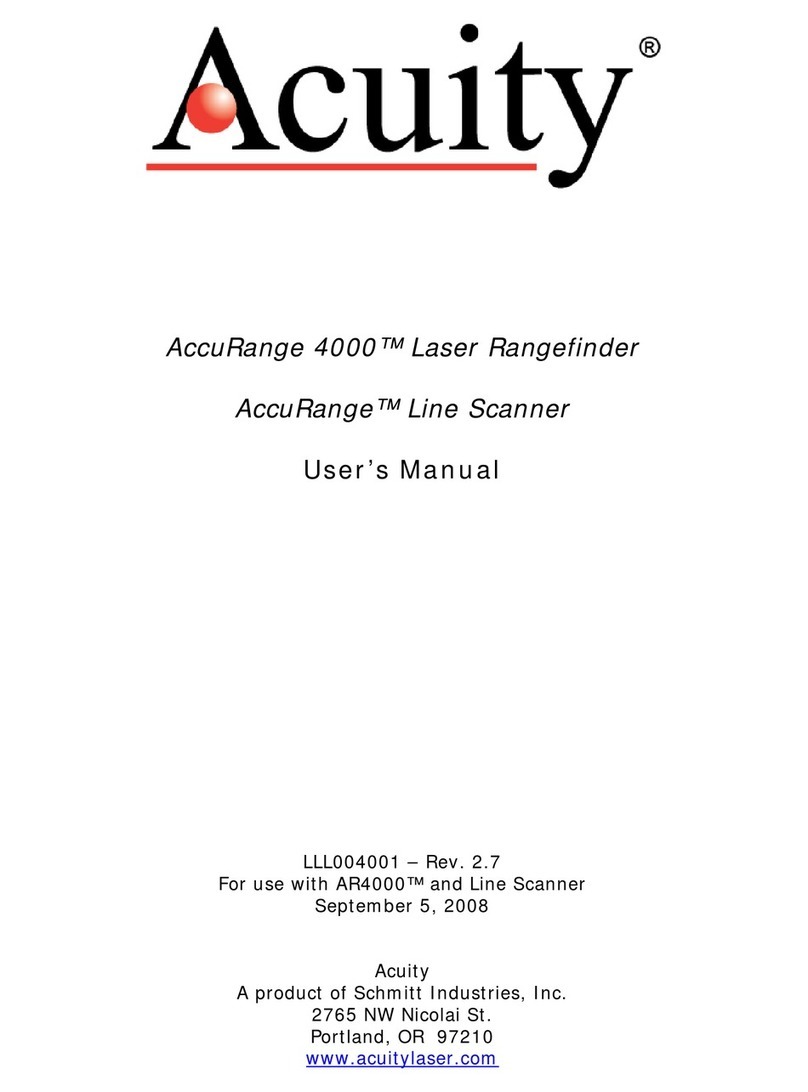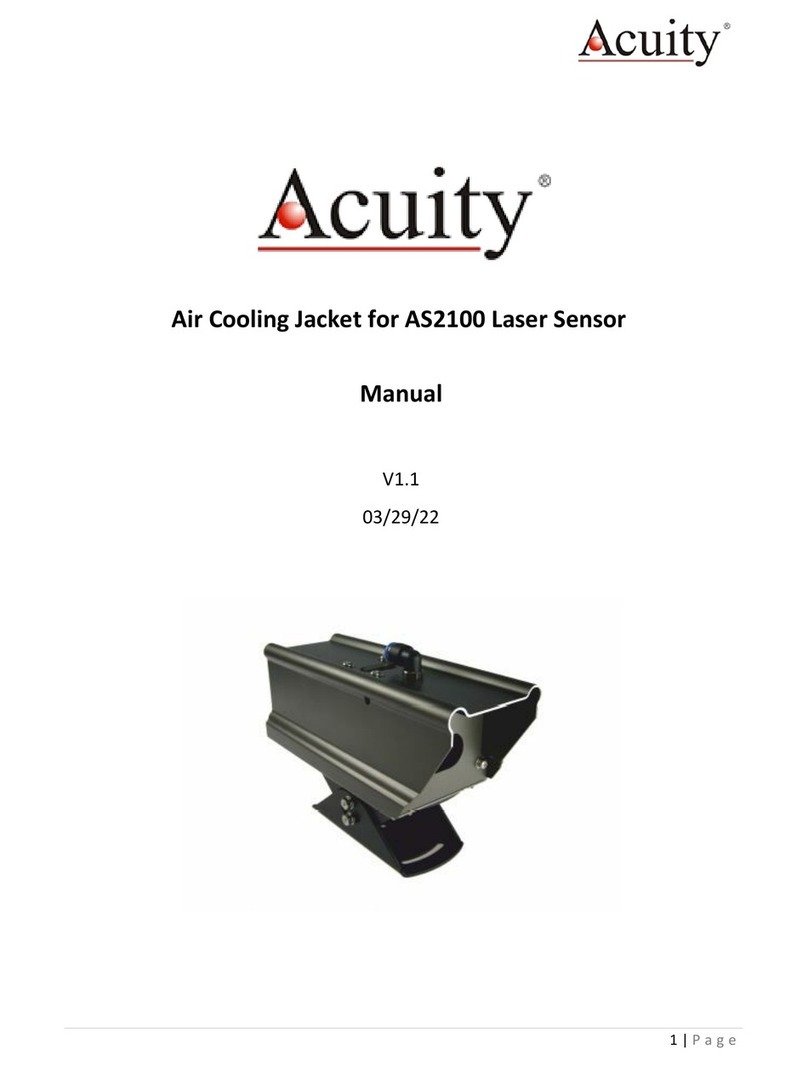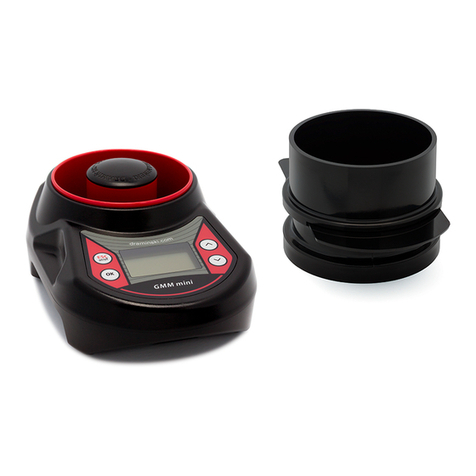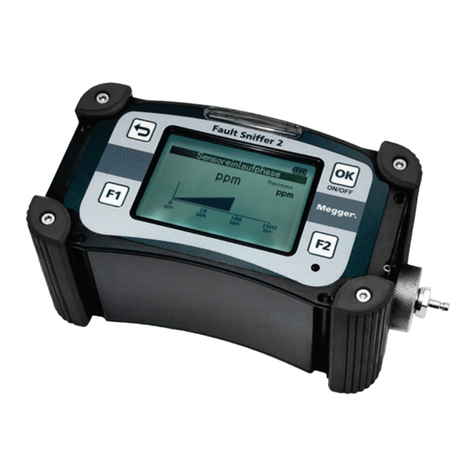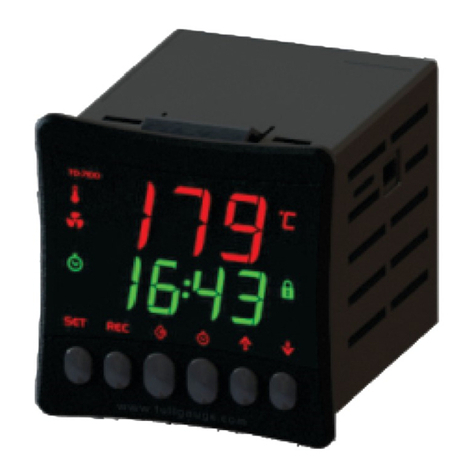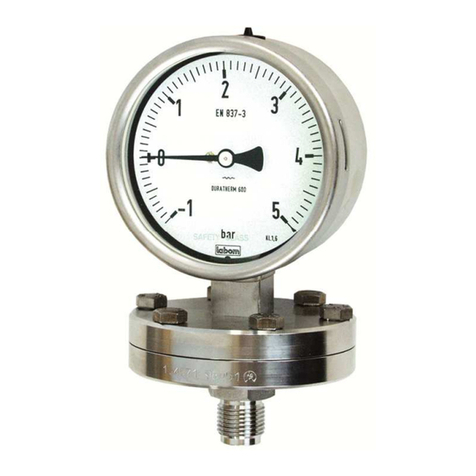Acuity AccuRange AR2700 User manual

Limited Use License Agreement
CAREFULLY READ THE FOLLOWING TERMS AND CONDITIONS BEFORE OPENING THE
PACKAGE CONTAINING THE PRODUCT AND THE COMPUTER SOFTWARE LICENSED
HEREUNDER. CONNECTING POWER TO THE MICROPROCESSOR CONTROL UNIT
INDICATES YOUR ACCEPTANCE OF THESE TERMS AND CONDITIONS. IF YOU DO NOT
AGREE WITH THE TERMS AND CONDITIONS, PROMPTLY RETURN THE UNIT WITH
POWER SEAL INTACT TO THE DEALER FROM WHOM YOU PURCHASED THE PRODUCT
WITHIN FIFTEEN DAYS FROM DATE OF PURCHASE AND YOUR PURCHASE PRICE WILL
BE REFUNDED BY THE DEALER. IF THE DEALER FAILS TO REFUND YOUR PURCHASE
PRICE, CONTACT SCHMITT INDUSTRIES, INC. IMMEDIATELY AT THE ADDRESS SET
OUT BELOW CONCERNING RETURN ARRANGEMENTS.
Schmitt Industries, Inc. provides the hardware and computer software program contained in the
microprocessor control unit. Schmitt Industries, Inc. has a valuable proprietary interest in such
software and related documentation ("Software), and licenses the use of the Software to you
pursuant to the following terms and conditions. You assume responsibility for the selection of the
product suited to achieve your intended results, and for the installation, use and results obtained.
License Terms And Conditions
a. You are granted a non-exclusive, perpetual license to use the Software solely on and in
conjunction with the product. You agree that the Software title remains with Schmitt
Industries, Inc. at all times.
b. You and your employees and agents agree to protect the confidentiality of the Software.
You may not distribute, disclose, or otherwise make the Software available to any third
party, except for a transferee who agrees to be bound by these license terms and
conditions. In the event of termination or expiration of this license for any reason
whatsoever, the obligation of confidentiality shall survive.
c. You may not disassemble, decode, translate, copy, reproduce, or modify the Software,
except only that a copy may be made for archival or back-up purposes as necessary for
use with the product.
d. You agree to maintain all proprietary notices and marks on the Software.
e. You may transfer this license if also transferring the product, provided the transferee agrees
to comply with all terms and conditions of this license. Upon such transfer, your license will
terminate and you agree to destroy all copies of the Software in your possession.

AR2700 User’s Manual i
Procedures for Obtaining Warranty Service
1. Contact your Acuity distributor or call Schmitt Industries, Inc. to obtain a return
merchandise authorization (RMA) number within the applicable warranty period.
Schmitt Industries will not accept any returned product without an RMA number.
2. Ship the product to Schmitt Industries, postage prepaid, together with your bill
of sale or other proof of purchase. your name, address, description of the
problem(s). Print the RMA number you have obtained on the outside of the
package.
This device has been tested for electromagnetic emissions and immunity
and has been found to be in compliance with the following directives for
class A equipment:
EN 62500-6-2:2002
EN 55011:2000
This device complies with part 15 of the FCC Rules. Operation is subject to
the following two conditions:
(1) This device may not cause harmful interference, and (2) this device
must accept any interference received, including interference that may
cause undesired operation.
Note: This equipment has been tested and found to comply with the limits for a
Class A digital device, pursuant to part 15 of the FCC rules. These limits are
designed to provide reasonable protection against harmful interference when the
equipment is operated in a commercial environment. This equipment generates,
uses, and can radiate radio frequency energy and, if not installed and used in
accordance with the instruction manual, may cause harmful interference to radio
communications. Operation of this device in a residential area is likely to cause
harmful interference in which case the user will be required to correct the
interference at his or her own expense.
This manual copyright © 2021, Schmitt Industries, Inc.

ii AR2700 User’s Manual
User’s Manual for the
AR2700™ Series Laser Sensor
Table of Contents
1. Introduction ........................................................................................................................ 1
1.1 General Overview....................................................................................................... 2
1.2 Definition of Terms ..................................................................................................... 2
1.3 Quick Start Instructions............................................................................................... 3
1.3.1 Mounting................................................................................................................. 3
1.3.2 Serial Data Wires.................................................................................................... 3
1.3.3 Analog Output Signals............................................................................................ 3
1.3.4 Alarm Signal........................................................................................................... 4
1.4 General Description.................................................................................................... 4
1.5 Principles of Operation ............................................................................................... 4
1.6 Mechanical Dimensions.............................................................................................. 5
1.6.1 AR2700 sensor unit................................................................................................ 5
1.7 Installation.................................................................................................................. 5
1.8 Laser Safety............................................................................................................... 6
1.9 Sensor Maintenance................................................................................................... 6
1.10 Sensor Service........................................................................................................... 6
2. Installation and Checkout................................................................................................... 7
2.1 Mounting..................................................................................................................... 7
2.2 Cabling for sensor unit................................................................................................ 7
2.2.1 Standalone Cabling ................................................................................................ 7
2.2.2 Serial Connection to a Host Computer.................................................................... 7
2.3 Power On ................................................................................................................... 8
2.4 Verifying Operation..................................................................................................... 9
2.5 Troubleshooting.......................................................................................................... 9
2.5.1 Serial Communications Check................................................................................ 9
2.5.2 Sensor Output Check.............................................................................................10
3. Signal and Power Interface ...............................................................................................10

AR2700 User’s Manual iii
3.1 Sensor Unit................................................................................................................10
3.1.1 Sensor Cable, Wire Colors and Functions .............................................................10
3.1.2 Power Supply (Red, Blue)......................................................................................11
3.1.3 RS232 Serial Communications (Green, Gray) .......................................................11
3.1.4 RS422 Serial Communications (Green, Pink, Yellow, Grey) ..................................12
3.1.5 Analog Output (Grey/Pink, Red/Blue) ....................................................................12
3.1.6 Alarm Outputs Q1 and Q2 (Brown, Black)..............................................................13
3.1.7 Trigger Input and Output (Violet)............................................................................13
4. Serial Interface Operation..................................................................................................15
4.1 Serial Hardware Interface..........................................................................................15
4.1.1 Communications Protocol......................................................................................15
4.1.2 Identification (ID)....................................................................................................16
4.1.3 Online Help (ID?)...................................................................................................16
4.1.4 Configuration Parameters Display (PA) .................................................................17
4.1.5 Baud Rate (BRx)....................................................................................................17
4.1.6 Serial Data Format (SDx y)....................................................................................18
4.1.7 Terminator (TEx)....................................................................................................20
4.1.8 Temperature Query (TP)........................................................................................20
4.1.9 Parameter Reset (PR) ...........................................................................................20
4.1.10 Device Reboot (DR)...........................................................................................20
4.1.11 Auto Start (ASx).................................................................................................21
4.2 Error Mode (SEx).......................................................................................................21
5. Analog Output Operation...................................................................................................21
5.1 Setting the range beginning and end points (QAx y)..................................................22
6. Alarm Output(s) Operation (Q1, Q2)..................................................................................22
6.1 Setting the alarms (Q1w x y z or Q2w x y z) .............................................................23
7. Performance Optimization.................................................................................................23
7.1 Measurement Modes.................................................................................................23
7.1.1 Distance Tracking Mode (DT)................................................................................23
7.1.2 Single Distance Measurement (DM) ......................................................................24
7.2 Measurement Frequency (MFx).................................................................................24
7.3Averaging Value (SAx) ..............................................................................................24
7.4 Measurement Window (MWx y z)..............................................................................24
7.5 Distance Offset (OFx)................................................................................................25
7.5.1 Set current measurement to Distance Offset (SO).................................................25

iv AR2700 User’s Manual
7.6 Select Target (STx) ...................................................................................................25
7.7 Trigger Input (TIx y)...................................................................................................25
7.8 Trigger Output (TOx) .................................................................................................26
7.9 Gain (GNx)................................................................................................................26
7.10 Time Calibration (TCx)...............................................................................................26
8. Serial Command Quick Reference ....................................................................................27

AR2700 User’s Manual 1
1. Introduction
This section is a guide to getting started with the AR2700 and this manual. The AR2700 has
a number of configurable parameters, but many applications can use the sensor in its default
factory configuration. This manual contains information for both the AR2700 sensor unit and
the AR2700 module.
The recommended order for reading the manual is:
•General Overview –Gives a brief understanding of the sensor operation.
•Operating Guidelines –Provides a few important safety tips.
•Definition of Terms –An aid for proper communication.
•Quick Start Instructions –This should provide the information necessary to connect
the sensor and verify its operation, either with a serial terminal program at 9600 baud,
or by connecting the current loop or Alarm Output interface.
•General Description –Gives important laser, operation, mechanical, and mounting
information.
•Installation andCheckout –Tailor theapplication. Use the other chaptersfor reference:
Signal and Power Interface –how to hook everything up
Serial Interface Operation –modes, formats, bias
Analog Output Operation –current loop, voltage, scaling
Alarm Output Operation –alarm settings
Performance Optimization –Sample Rate, Background Elimination, Exposure
control
AR2700 Command Set –explains all commands for customizing the application

2 AR2700 User’s Manual
1.1 General Overview
The AR2700 is a time-of-flight rangefinder that measures distance using an infrared
(invisible) laser beam, a photodiode, and a microprocessor. The rangefinder works based
on comparative phase measurement by emitting modulated high-frequency light which is
diffusely reflected back from the target with a certain shift in phase. This return signal is
compared with a reference signal. From the amount of phase shift, a resulting distance is
determined with great accuracy. The maximum range measurement for the device is 885
feet (270 m) using special reflective targets. On normal surfaces with low reflectivity, the
maximum range is 230feet (70m). The Class 1 infrared laser diode makes the rangefinder
eye safe for use in all environments. The model is designed for fast measurement speeds,
up to 40 KHz, making it ideal for tracking the position of moving targets. Speed and
accuracy performances vary depending on target surface reflectance. The AR2700
technical data sheet specifies sensor performance standards.
A variety of configuration settings can be selected via the serial port. The complete list of
settings is found in the AR2700 Command Set chapter and each setting is discussed in
detail in a specific operation chapter.
The Sample Rate can be specified and the sensor has maximum capability of 40,000
samples per second. Sampling may be turned on and off. It can even be triggered using
an input signal wire or a serial command.
Measurement output can be in the form of serial data (RS232 or RS422) or Analog Output
(4-20mA current loop).
Do not attempt to disassemble the sensor or loosen any screws. Improper
disassembly will destroy the optical alignment of the sensor and necessitate factory
repairs.
Do not operate the sensor in areas where the sensor case is exposed to direct
sunlight for extended periods or where the air temperature is more than 60C (140F)
or less than -20°C (-4°F).
Don’t allow fast temperature variations during sensor operation.
Avoid excessive vibration and shocks. The sensor contains securely mounted but
precisely aligned optical components.
Do not operate the sensor if the lens is fogged or dirty.
Do not scratch the lenses on the front face of the sensor. Keep the lenses clean with
expert optical procedures. The lenses are glass with an anti-reflection coating. Avoid the
use of organic cleaning solvents.
Do not touch the lenses with bare fingers. The oils are very difficult to remove.
Operate only with DC supply voltages up to 30 volts.
1.2 Definition of Terms
Sensor –The complete AR2700 measurement device.
Target –The object of measurement. The relative distance from the sensor to the target
is measured by the sensor.
Laser, Laser beam –This bright light is emitted from the sensor, reflected from the target,
and collected by the camera lens. For the AR2700, it is infrared radiation.
<Range> –The maximum relative distance measurable by the sensor.

AR2700 User’s Manual 3
1.3 Quick Start Instructions
This will get the sensor running in its factory default configuration.
Only one output type (Serial or Analog) is needed to transmit measurement data.
1.3.1 Mounting
This section refers to the mechanical fixture of the AR2700 sensor.
Quick suggestion: Lay the sensor on the floor or a table. It may need to be held in
place with a clamp or a weight. Orient the laser so that the laser is not obstructed. Use
a piece of paper such as a business card to insert into the beam to use as a
measurement target. Thelaser should beaimed ata target suchthat thedistance from
the reference point to the target can be measured. The infrared laser spot can be
viewed with a digital (CCD) camera.
Mount the sensor in such a way that the case is not twisted or warped.
Attach the cable’s 12-pin connector to the plug on the rear of the sensor.
Connect the red (Supply +) and blue (Supply Voltage Ground) wires of the sensor
cable to a 10 to 30 volt DC power supply (or use the power supply if the sensor came
with one).
1.3.2 Serial Data Wires
The serial connection is required to set up a unit for operation. If not using the Acuity
Connectivity kit which includes a serial cable, the customer must make their own D-
sub 9 serial connector
1.3.2.1 RS232 serial
Connect the RS232 wires to a 9 pin D-SUB male connector that can be plugged
into a COM port of a PC (RS232): Red / Blue (Signal Ground) to pin 5, Green
(Transmit) to pin 2, and Gray (Receive) to pin 3. See section 2.2.2.
Start a terminal emulator on the PC and set it for that COM port at 115200 baud,
8 bit, 1 stop, parity: none, no flow control.
1.3.2.2 RS422 serial
Connect the RS422 wires to a RS422 adapter connected to a PC COM port. See
section 2.2.2.
Start a terminal emulator on the PC and set it for that COM port at 115200 baud, 8 bit,
1 stop, parity: none, no flow control.
The sensor defaults in distance-tracking mode (DT) with metric units and you should
see distance measurements scroll down the screen.
1.3.3 Analog Output Signals
Quick suggestion: connect a DVM (digital volt meter) to the wires: Blue to Common,
Grey / Pink to mA input. Type QA. The output is a 4-20mA current loop from 0 to 1.00
meters. The meter should read near 4 mA when a target is placed in the laser beam
near 0 meters and 20 mA near 1.0 meters

4 AR2700 User’s Manual
1.3.4 Alarm Signal
Quick suggestion: connect the Alarm 1 signal wire (brown) to a 1K resistor in series
with an LED, anode to the resistor, cathode to ground (blue).
The default action is: Alarm will go active (LED lights) if a target is measured at a
distance greater than 1m.
1.4 General Description
The AR2700 is a laser diode based distance measurement sensor for ranges up to
230 feet (70 m) on regular surfaces with as little as 10% reflectivity and up to 885 feet
(270 m) using a reflective target. Contact Acuity for these targets. The accuracy is
generally specified with an absolute linearity of +/- 2.36 inches (60 mm) and a 1 sigma
repeatability of +/- 0.98 inches (25 mm). Linearity will vary depending on sample
averaging, temperature and surface reflectivity of the target surface. Measurement
noise to a stationary target of 50% reflectivity wasreduced to 3 mm at 100 Hz sampling
speeds. The AR2700 internally compensates for temperature changes, but does not
have an on-board heater for use in cold environments.
1.5 Principles of Operation
The AR2700 uses the time of flight of light to measure distance. The laser beam is
projected from the housing’s aperture and shines on a target surface, where it creates a
small infrared spot. From there the laser light is reflected back to the sensor. A collection
lens is located in the sensor to the side of the laser aperture. It collects a portion of the
reflected light, which is focused on an avalanche photodiode and converted to an electrical
signal. The signal is amplified and symbolizes a shift in phase. This phase is compared to
a reference signal to determine the amount of shift and hence a change in distance.

AR2700 User’s Manual 5
1.6 Mechanical Dimensions
1.6.1 AR2700 sensor unit
The following diagram shows themechanical dimensions for the AR2700. The sensor unit has
four M3 threaded holes on the bottom, three M3 threaded holes on the side, and two M3
threaded holes on the face for mounting to a bracket. The cable is for power and all
communications (serial, analog, trigger, power, etc.). It is a 12-pin M12male connector (Binder
series 713). The outer case of the sensor is extruded aluminum with anodization for corrosion
resistance.
1.7 Installation
The AR2700 sensor unit is typically installed by affixing the sensor to a machined bracket with
threaded bolts through the mounting holes on the bottom, side, and face of the sensor. Their
location is shown in the mechanical drawing in section 1.6.1. Note that the zero point is the
front edge of the case. Most brackets will have adjustment capabilities so the AR2700’s laser
can be aimed in X, Y and Z coordinates.

6 AR2700 User’s Manual
1.8 Laser Safety
Installers of laser sensors should follow precautions set forth by ANSI Z136.1 Standard for the
Safe Use of Lasers or by their local safety oversight organization. The AR2700 is a class 1
(eye safe) laser product as stipulated in IEC 60825-1/DIN EN 60825-1:2001-11 and a class 1
product underFDA 21CFR. As thelaser is 905 nm wavelength, the humaneye has no aversion
response (blinking), but there is no hazard to the eye at this laser class.
Figure 1 AR2700 laser safety labels
1.9 Sensor Maintenance
The AR2700 sensor and module require little maintenance from the user. The sensor lens
should be kept clean of dust buildup as a part of regular preventative maintenance. Use
compressedair to blow dirt offthe window or use delicate tissue wipes.Do not use any organic
cleaning solvents on the sensor. If your sensor does not function according to specifications,
contact Schmitt Industries, Inc. Do not attempt to loosen any screws or open the sensor
housing.
1.10 Sensor Service
The AR2700 sensor is not user-serviceable. Refer all service questions to Schmitt Industries,
Inc. Do not attempt to loosen any screws or open the sensor housing.

AR2700 User’s Manual 7
2. Installation and Checkout
2.1 Mounting
Mount the sensor in such a way that the case or circuit board is not twisted or warped.
Using three hard points along the front and back edges or a slightly compliant mounting
system are the best methods. Do not clamp or squeeze the sensor case excessively. If
the case is distorted, the sensitivity and accuracy of the sensor may be affected.
2.2 Cabling for sensor unit
The AR2700 sensor unit has a multipurpose cable with 12 conductors (sold separately).
The standard cable is LiYCY (TP) a flexible, overall shielded, PVC twisted-pair data
transmission cable for use in flexible and stationary applications under low mechanical
stress with free movement without any tensile stress, loads or forced movements in dry,
damp and wet conditions. The twisted pair construction reduces interference (crosstalk)
within the cable while the tinned copper braid shield offers optimum protection from
electrical and electromagnetic interference. Not suggested for outdoor use.
The standard cable length is 6.6 feet (2 m) and longer cable lengths are available.
Connection and termination according to the instructions is essential for correct sensor
operation. Read the wire descriptions in Section 3.1.1 for connection information.
2.2.1 Standalone Cabling
To use the AR2700 sensor unit without a serial connection to a host computer, the
only connections necessary are the power and ground wires, the analog output wires,
and optionally the alarm output wire connecting to your data display, recording, or
control equipment. See Signal and Power Interface (section 3) for wire connections.
In its default configuration, the AR2700 should measure distances on power-up
(Autostart in DT mode).
In 4-20mA analog output mode, the best accuracy and linearity for the current loop is
obtained with a 500-ohm load to current loop return at the measurement point. An out-
of-range current indicates a sensor measurement error.
The alarm output wire can be used to connect to control equipment.
2.2.2 Serial Connection to a Host Computer
The simplest way to connect the AR2700 sensor to a PC computer for initial
configuration or regular distance measuring is with the use of an Acuity Connectivity
Kit. This is a sealed connection box which contains terminal blocks for each wire lead.
It also has an AC power supply and a 2m RS232 serial cable for connection to a PC.
Without the Acuity connectivity kit, the user must connect a DB9 plug to the cable
using the directions below.
RS232: A 9-pin serial D-sub serial connector can be attached to the serial output wires
to connect the AR2700 directly to an PC 9-pin serial port.

8 AR2700 User’s Manual
Figure 2 Wiring configuration for 9-pin connector
for RS232 serial communications
RS422: An RS422 adapter must be usedto connectthe AR2700 to a PC. See the wire
functionality chart in section 3 for details.
For testing use a terminal emulation program such as HyperTerminal or TeraTerm.
After naming the connection and choosing an icon, choose the COM port that the
AR2700 is connected to. In the next configuration screen, set to 112500 baud, 8 bits,
NO parity, 1 stop bit and NO flow control to communicate with a sensor in the default
configuration.
2.3 Power On
Connect a 15 volt (10 –30 volts) power supply to the power and ground lines of the sensor
cable. See Signal and Power Interface (section 3) for wire connections. Only the power
and ground need be connected for operation in addition to the serial interface.
When power is applied the laser beam will be emitted from the bottom half of the sensor’s
window. The sensor will immediately begin measuring in Distance Tracking mode.
Distance readings will scroll down the terminal emulator and the default units are be in
meters. See section 4.1 for command information.

AR2700 User’s Manual 9
2.4 Verifying Operation
In default DT (distance tracking) mode, the AR2700 transmits approximately 10 samples
per second (10,000 Hz with 1000 Averaged samples) at 112500 baud over the serial
signals, and transmits measured distance over the current loop output at the same update
rate. The actual measurement speed will depend upon the selected measurement mode
and the reflectance of the target surface. The current loop should put out 4 mA at the near
end of the measurement range, and 20 mA at the far end. Check either, or both, signals
to verify basic sensor operation.
2.5 Troubleshooting
The sensor displays simple error indications using its function display LEDs. Trouble
shooting steps are shown below:
Symptom
Possible Cause
Correction
No laser light and
no sample data
Sampling is turned off
Power supply voltage is too
low
Turn Sampling on
Check power supply input
voltage
Serial port not
responding
Power supply voltage is too
low
Baud rate incorrect or
unknown
Check power supply input
voltage
See section 4.1.5
Error code (E02) is
transmitted on
serial port
Measurement outside of
Measurement Window (MW).
AR2700 unable to see target
See section 7.4 for configuring
MW
2.5.1 Serial Communications Check
If no information is received over the serial port, check the power supply and serial wire
connections. The sensor may be in a configuration that prevents serial communication,
such as being set at the wrong baud rate.
Type PR<Enter> to reset the sensor to the factory defaults (including 115200 baud rate).
If the sensor’s baud rate is unknown, then the PR<Enter> command must be issued from
the terminal emulator while set at each of the AR2700’s possible baud rates until the
AR2700 accepts the command and sets the baud rate to 9600. The possible baud rates
are 9600, 19200, 115200, 230400, 460800, 921600, 1843200, 2000000.

10 AR2700 User’s Manual
2.5.2 Sensor Output Check
If the sensor output value is in error, check that the sensor and target are stationary and
stable, that the target is at least 8 inches (0.2 m) from the sensor’s lens, and that the laser
beam is hitting the target. To see the infrared laser spot, view the spot through a digital
camera viewfinder.
The distance offset setting may alter the values output by the sensor. Reset the sensor to
the factory default to remove its effect.
The sensor may need to warm up for 5-10 minutes before reaching full accuracy. Leave it
on for a few minutes and re-check the sensor accuracy.
3. Signal and Power Interface
3.1 Sensor Unit
3.1.1 Sensor Cable, Wire Colors and Functions
The AR2700 sensor has a (optional) multipurpose cable (sensor cable) with solder
tail wires. Connection and termination according to the instructions is essential for
correct sensor operation. Read the wire descriptions for connection information.
Figure 3 AR2700 multipurpose cable with 12 conductors (Binder 713)
The tables below shows the wiring on systems ordered without power supplies.
Wire
Pin
Function in All Modes
Brown
1
Alarm 1 output Q1
Blue
2
Ground –Supply Voltage
White
3
RS232/422 Setting Pin
Green
4
RS232 TX or RS422 TX+
Pink
5
RS422 RX-
Yellow
6
RS422 TX-
Black
7
Alarm 2 output Q2
Gray
8
RS232 RX or RS422 RX+
Red
9
Supply Voltage (10 –30 VDC), 3W max
Violet
10
Trigger signal IN/OUT
Grey / Pink
11
Analog output 4-20mA signal
Red / Blue
12
Ground –measurement signal (Analog)

AR2700 User’s Manual 11
3.1.2 Power Supply (Red, Blue)
The Blue wire is the Power Supply Common return, also named Ground. It carries the
return current for the power supply.
The Red wire is the Power Supply Input to the sensor. The sensor requires +10 VDC
power at 125 mA. The Analog Output uses an additional current up to 25 mA.
Power supplies from 10 VDC to 30 VDC may be used. Higher voltages will result in
excessive current drawn by the over-voltage protection circuitry and may cause
permanent damage. Voltages less than 10 VDC may result in inaccurate
measurement readings or non-functionality. The AR2700 sensor has inverse polarity
protection and over-voltage protection to a maximum of 42 V.
3.1.3 RS232 Serial Communications (Green, Gray)
RS232 and RS422 interfaces must not be connected and operated simultaneously.
See Serial Interface Operation (section 4) for information on commands and data.
RS232: RS232 is normally used for slower speeds and shorter distances of
communications. A standard 9-pin D-SUB RS232 serial female connector can be built to
interface with a PC compatible computer using connection the pins below.
Color
DS9 Pin
Function
Green
2
Transmit data from sensor
Gray
3
Receive data to sensor
Red / Blue
5
Signal ground reference
N /C
1, 4, 6
DCD, DTE, DCE –These three signals can be
tied together to satisfy some PC signal
requirements for hardware handshake.
N / C
7, 8
CTS, RTS –These two signals can be tied
together to satisfy some PC signal
requirements for hardware handshake.

12 AR2700 User’s Manual
3.1.4 RS422 Serial Communications (Green, Pink, Yellow, Grey)
RS422: RS422 is normally used for faster speeds and longer distances of
communications. Two wires, usually twisted together, carry each differential (noise-
immune) signal. There are no standard PC connections. A special adapter is required to
connect to a PC using RS422.
Wire
Pin
Function in All Modes
Green
4
RS422 TX+
Pink
5
RS422 RX-
Yellow
6
RS422 TX-
Grey
8
RS422 RX+
Red / Blue
12
Ground –measurement signal
3.1.5 Analog Output (Grey/Pink, Red/Blue)
The Red/Blue wire is the return signal for the Analog Output. It is connected to ground
inside the sensor and should not be connected to ground outside the sensor.
Inadvertently connecting it to ground may cause a reduction in accuracy of the analog
output. The analog signalfor distance is a 4-20 mA current loop. Sensor error signaling
can be configured to output either 3 mA or 21 mA.
In Current Loop mode the Grey / Pink wire delivers a current proportional to the
measured distance. The resolution is characterized by a 16-bit digital-to-analog
converter.
Figure 4 Wiring Diagram for Analog output
The best conversion to voltage is obtained by connecting a 100 ohm load resistor
(<500 ohms, 0.5 Watt minimum) between the Grey/Pink and Red/Blue wires at the
measurement point.

AR2700 User’s Manual 13
3.1.6 Alarm Outputs Q1 and Q2 (Brown, Black)
The Brown wire is the Alarm Output 1 (Q1). The Black wire is Alarm Output 2 (Q2).
See Alarm Output Operation (section 6) for operation options and details.
The Alarm Output is an open collector PNP transistor switch to the Ground for Power
(Blue). When the Alarm Output is not active, its output will be high impedance and no
current will flow through it. When the Alarm Output is active (On) it can source up to
500mA of current.
The voltage on the Alarm wire must not exceed the limits of the Power Supply
connection voltages (Red and Blue wires), or excessive current may flow into the
sensor and cause damage. A load resistor of > 150 Ohms/6 W (max. operating voltage
of 30 V; max. load current of 0.2 A) must be switched against Ground (Blue) at the
switching output. A typical resistance is 1 kOhm against ground.
Figure 5 Wiring diagram for Alarm Output
3.1.7 Trigger Input and Output (Violet)
The Violet wire can be used as a trigger signal input OR output. The trigger function
can be set with the parameters TI (Trigger Input - See Section 8.7) and TO (Trigger
Output –See Section 8.8)
Voltage levels for the trigger signals
LOW 0-1.5V
HIGH 3-30V
Threshold 2.25V
Hysteresis 0.1V
Note: The violet wire can only be used as EITHER a trigger signal input OR output
at any one time. This is determined by the value of the y parameter of the TI
command (See section 8.7)

14 AR2700 User’s Manual
Figure 6 –Wiring Diagram for Trigger Input
Figure 7 –Wiring Diagram for Trigger Output
Table of contents
Other Acuity Measuring Instrument manuals
Popular Measuring Instrument manuals by other brands

Franklin Electric
Franklin Electric CELLTRON ADVANTAGE DIGITAL user guide
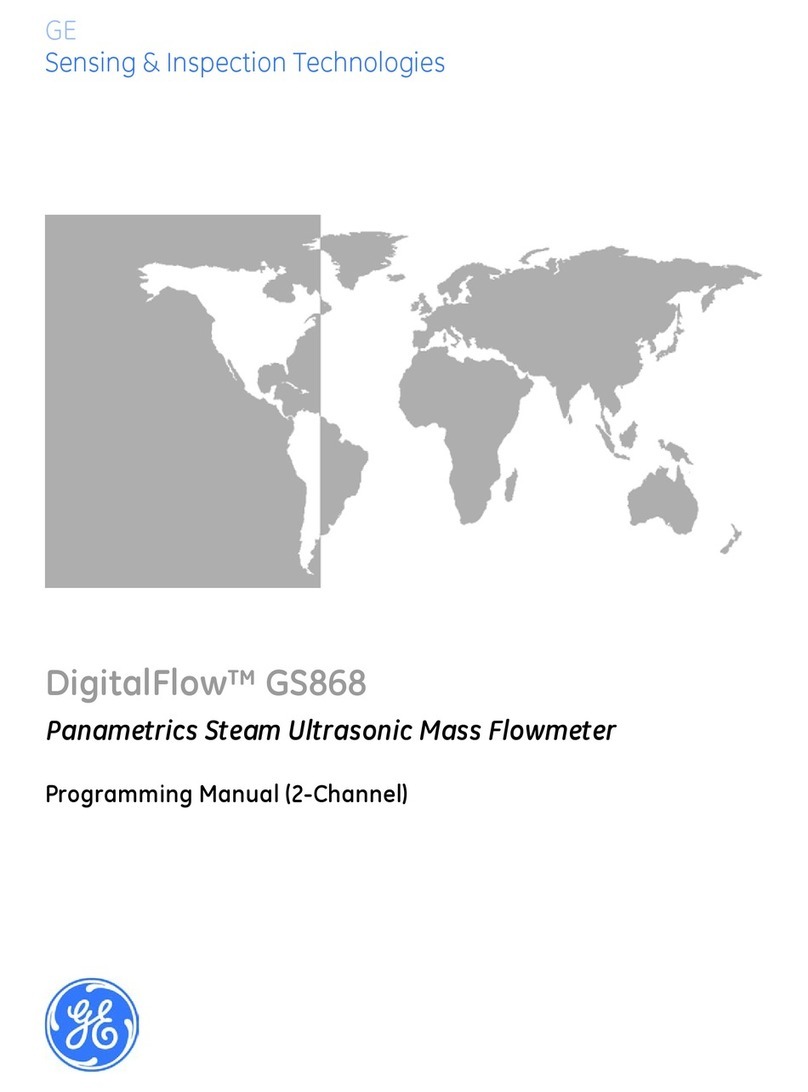
GE
GE DigitalFlow GS868 Programming manual
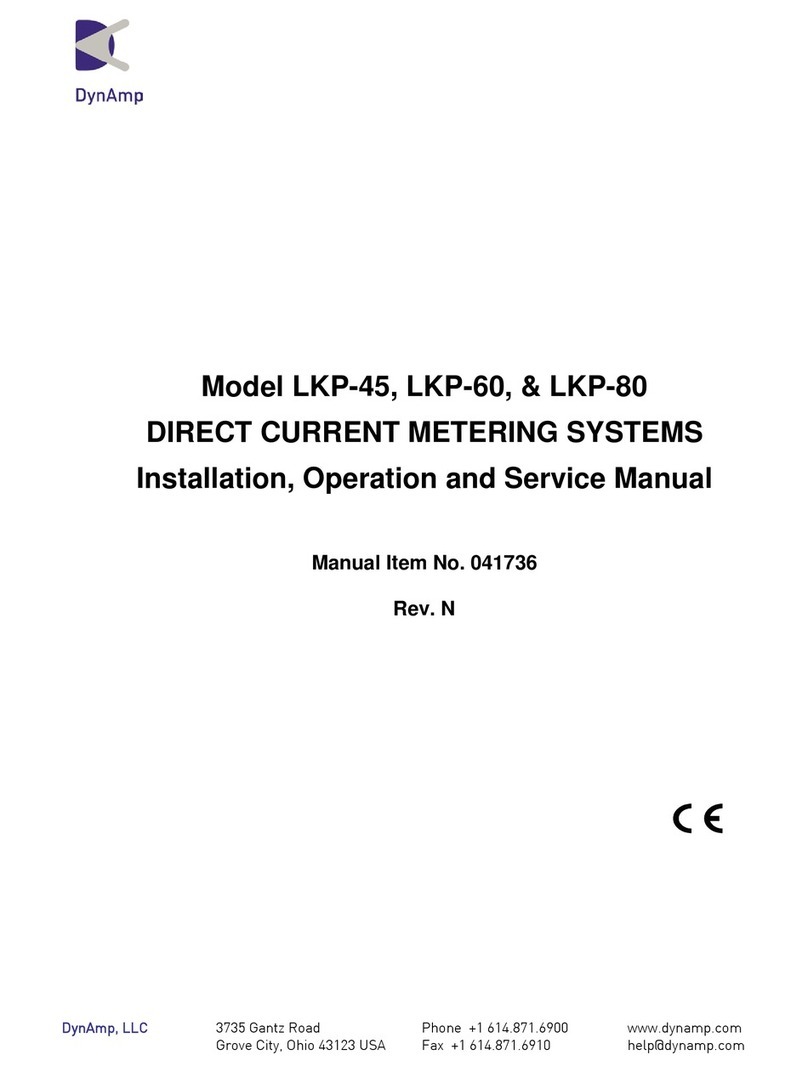
DynAmp
DynAmp LKP Series Installation, operation and service manual
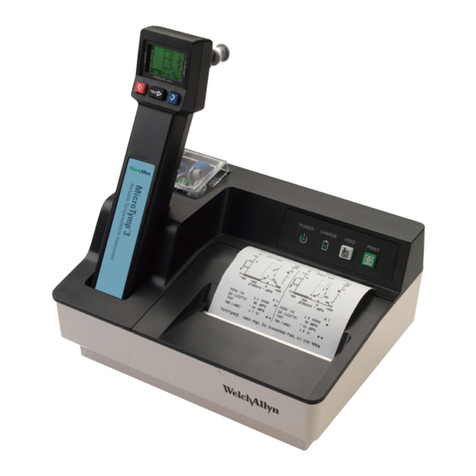
Welch Allyn
Welch Allyn MicroTymp 3 Handle Directions for use
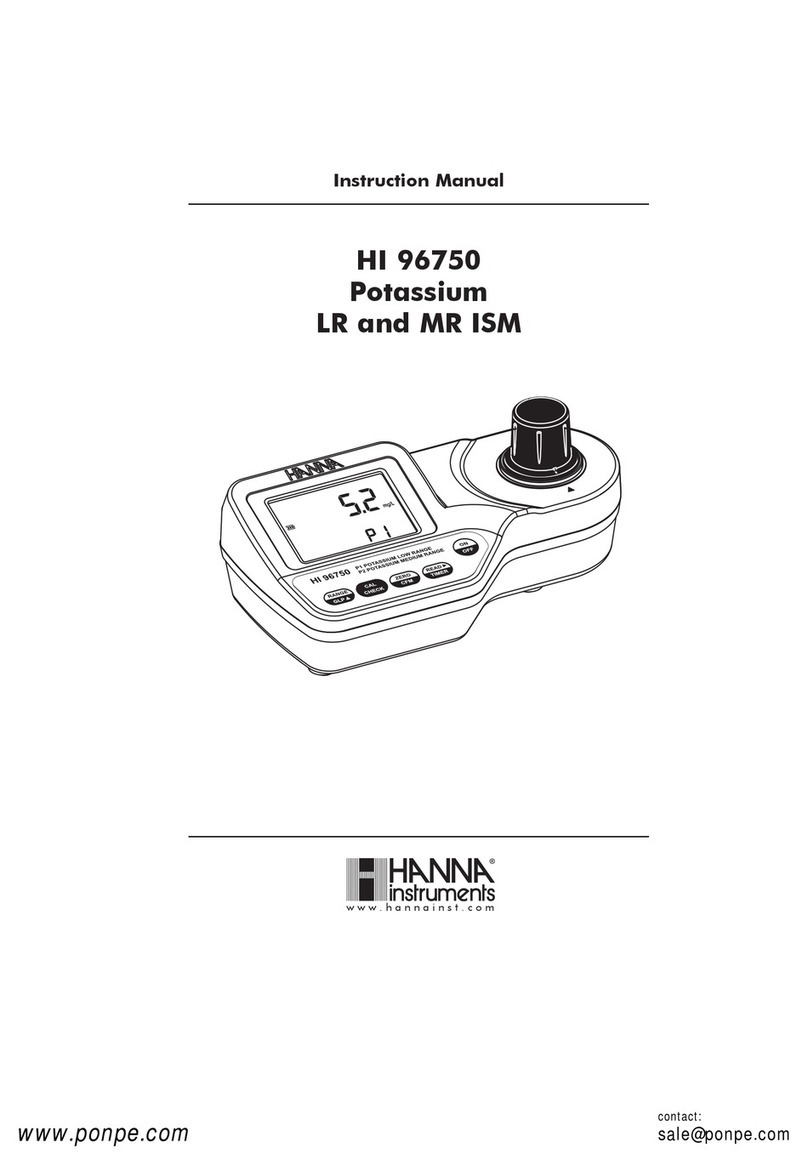
Hanna Instruments
Hanna Instruments HI 96750 instruction manual

Noyes
Noyes AFL OPM5-2D user guide
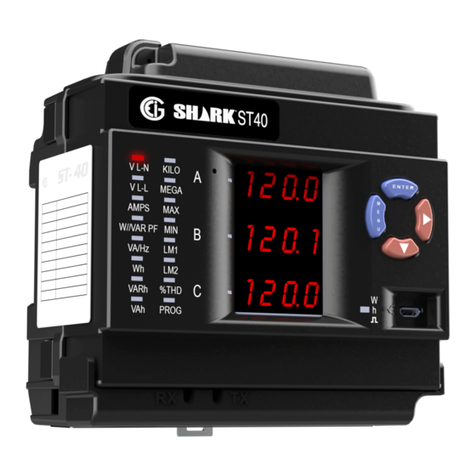
Electro Industries
Electro Industries Shark ST40 quick start guide
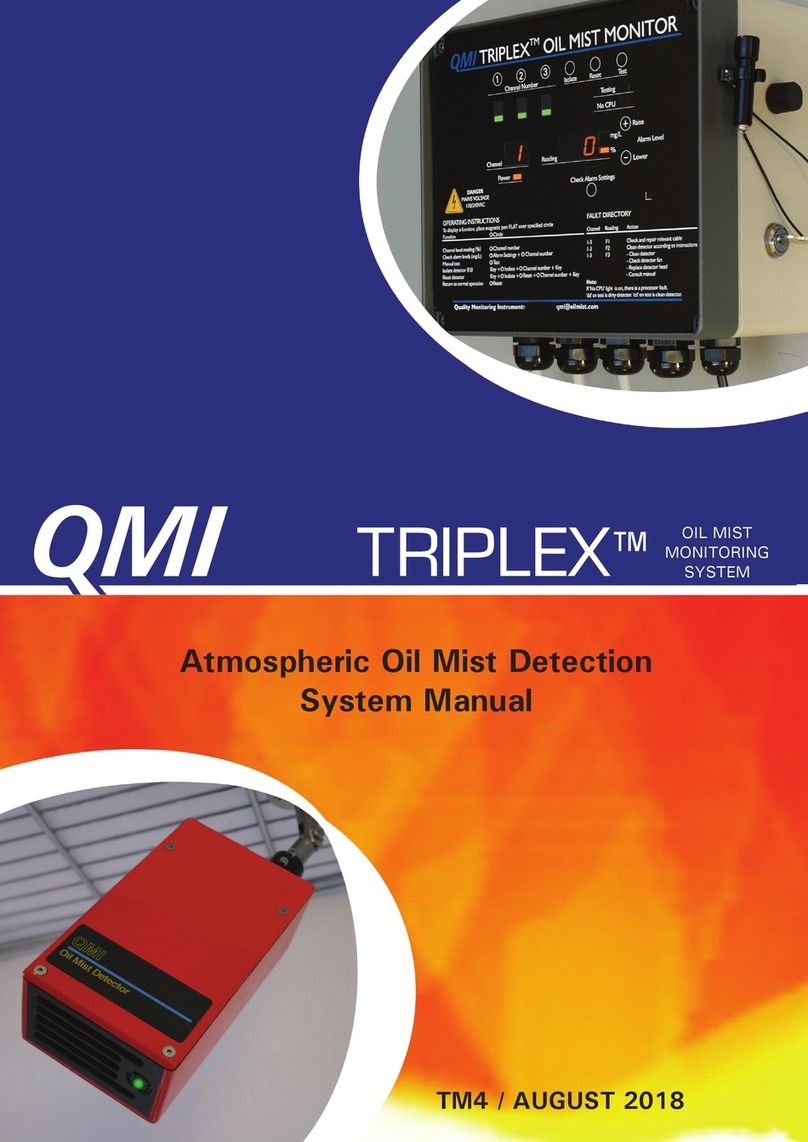
QMI
QMI TRIPLEX manual
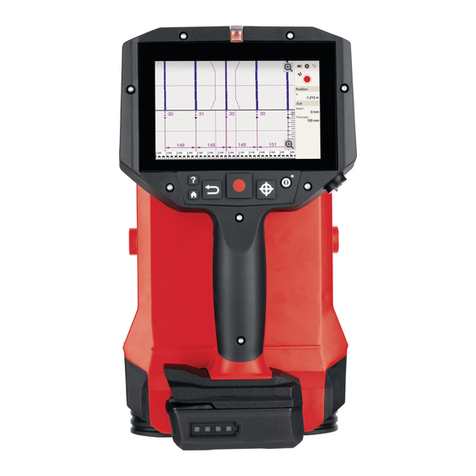
Hilti
Hilti PS 300 Original operating instructions
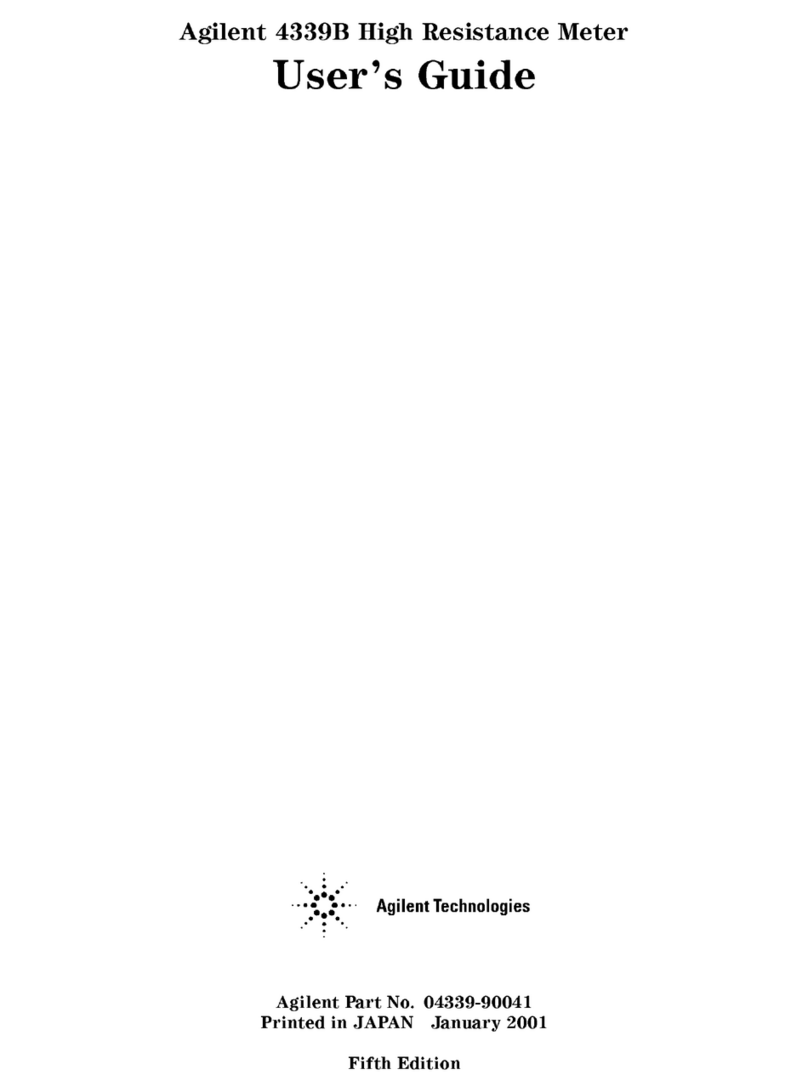
Agilent Technologies
Agilent Technologies 4339B user guide

Keysight Technologies
Keysight Technologies U1401B quick start guide
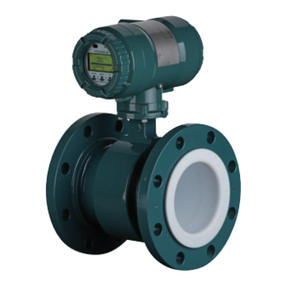
YOKOGAWA
YOKOGAWA ADMAG TI Series user manual

